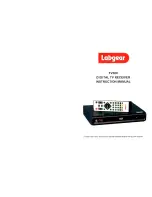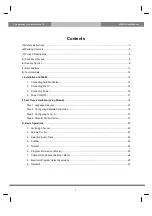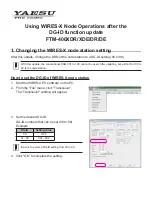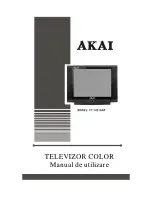
■
BCM5221
Product Application Note
■
BCM5220
7/7/00
Bro a d c o m C o rp o r a t i o n
Page 17
5221/5220-AN01 Product Application Note, Revision R
G
ENERAL
L
AYOUT
N
OTES
When determining component placement and routing for a BCM5221 based design, the following recommendations help
optimize system design and performance.
Analog Related Passive Component Placement.
Relative component placement across the analog side of the
BCM5221 (pins 17 through 32) is critical and should be addressed with the following priorities in mind:
•
Power supply filter components should be placed first and located closest to the PHY (highest priority).
•
Transmit termination resistors should be placed as close as possible to the TD+/- pins of the PHY.
•
Receive termination network should be placed as close as possible to the RD+/- pins of the PHY.
TD+/- Trace Routing.
When routing the TD+/- signal traces from the PHY to the 1:1 transformer, the traces should be
routed adjacent to a ground plane for controlled characteristic impedance. Broadcom recommends that the TD+ and TD-
signal traces be routed with matched length (as short as possible), and with a characteristic differential impedance of 100
Ω
.
100Base-TX and 10Base-T Signaling.
The BCM5221 incorporates a unique transmit drive architecture that sinks cur-
rent instead of sourcing current. In 100Base-TX mode, 40 mA is always pulled down through the transmit transformer’s pri-
mary winding (via the center tap connection to VDD) and is steered in one direction of the other, depending on the state of
the transmit DAC. This generates a true differential 2V nominal pk-pk voltage swing that is centered around the VDD center
tap potential of the transmit transformer.
When configured for 10BASE-T operation, the transmit DAC operates in class AB mode. This implementation conserves
device power by reducing the total transmit current required to generate the IEEE compliant Manchester encoded signaling.
In order to ensure that the transmit signal retains optimal integrity, it is recommended that the controlled impedance transmit
path from the PHY to the magnetics be kept as short and direct as possible with minimum vias, and with properly placed
termination.
RD+/- Trace Routing.
The RD+ and RD- traces, which connect the receive transformer to the PHY, should be routed with
a differential characteristic impedance of 100
Ω
and should be routed adjacent to a ground plane. Again, matched trace
length is important.
Reference Clock.
If the design requires a low cost crystal, minimize trace length from the crystal to the XTALI and XTALO
pins of the BCM5221. This will help minimize stray capacitance and noise pick-up that might otherwise affect the reference
clock integrity. In a worst case scenario, too much parasitic capacitance and/or inductance in the crystal traces could cause
the crystal to suffer from start-up problems and/or instability.
When using a single-ended reference clock, it is usually best to series terminate at the clock source to ensure optimal signal
integrity at the input to the BCM5221.
Magnetics to RJ45-8.
Broadcom recommends that properly grounded (usually to the chassis ground) shielded RJ45-8
media connectors are used to control EMI emissions.
When routing the transmit and receive pairs between magnetics and the RJ45-8, it is recommended that an inner layer or
layers be used. The outer layers (top and bottom) can then be dedicated to chassis ground in the area between the mag-
netics and the RJ45-8. This will help isolate the sensitive analog signals from external noise sources, as well as help reduce
EMI emissions. See Figure 9 on page 16.
Chassis Ground.
When planning the placement of chassis ground in the layout, it is always beneficial to consider placing
at least two component pads (1206 size) across the void between chassis ground and system ground (see Figure 9 on page
16). These component pads may be stuffed with a variety of components to reduce EMI emissions. Installing O
Ω
resistors,
high R value resistors, capacitors, or leaving these pads unpopulated are options to be considered. These options can pro-
vide substantial flexibility when attempting to control EMI emissions.






































